This is one in a series of posts on the Fujifilm GFX 100S. You should be able to find all the posts about that camera in the Category List on the right sidebar, below the Articles widget. There’s a drop-down menu there that you can use to get to all the posts in this series; just look for “GFX 100S”. Since it’s more about the lenses than the camera, I’m also tagging it with the other Fuji GFX tags.
I’ve been posting a lot recently about the 120 mm f/4 GF macro lens for the GFX. I found it a good performer at 1:2, at minimum focusing distance (MFD) with no extension tubes, but that it had really soft edges and a lot of focus curvature at MFD with 36 mm of tubes. In this post, I tested it at 1:1 with a 45 mm tube,a and found it credible on-axis but soft on the right edge of the frame. I reported those results numerically and visually, using the time honored sharpness target of a banknote. The 120/4 GF was soft in the corners and edges at MFD with 18mm, 36mm, and 45mm of extension by tubes.
For copy applications at high magnifications, and for some 3D subjects that require extension tubes, the 120/4 GF just isn’t cutting it. I tried the CV 125/2.5 and it was a big improvement. I’d tried a Schneider 90 mm f/4.5 Apo Componon enlarging lens, and it was a disappointment at 1:1. I’d heard good things about the Pentax 645 120mm f/4 smc FA macro lens. It was almost as good as the CV 125/2.5 — and is substantially easier to find and less expensive. I also tried the Schneider 120/5.6 0058 Makro Symmar, and got very good results.
In this post, I’m testing a Rodenstock 105mm f/5.6 HR Digaron Macro at 1:1. This lens has a ring on it that you can adjust to optimize it for any reproduction ratio between 1:3 and 3:1.
Here’s how it looks mounted on a Cambo Ultima II.
And here on a Cambo Actus lined up on my backlit razor blade target:
Here’s the test procedure:
- GFX 100S
- Foba camera stand
- C1 head
- Lens focused to get to 1:1 magnification
- ISO 100
- Electronic shutter
- Indicated f/5.6 through f/11 in whole-stop steps
- Exposure time adjusted in M mode
- Cognisys rail, 100 exposures, 40 um step size
- Initial focus short of target
- Convert RAF to DNG using Adobe DNG Converter
- Extract raw mosaics with dcraw
- Extract slanted edge for each raw plane in a Matlab program the Jack Hogan originally wrote, and that I’ve been modifying for years.
- Analyze the slanted edges and produce MTF curves using MTF Mapper (great program; thanks, Frans)
- Fit curves to the MTF Mapper MTF50 values in Matlab
- Correct for systematic GFX focus bracketing inconsistencies
- Analyze and graph in Matlab
Here are the results compared to the Schneider 120/5.6 0058 Makro Symmar:
The vertical axis is MTF50 in cycles per picture height. Higher is sharper. The horizontal axis is f-stop.
- The blue and red columns are for the Rodenstock lens on axis, with, respectively, a horizontal and a vertical edge.
- The yellow and purple columns are for the Schneider lens on axis, with, respectively, a horizontal and a vertical edge.
- The green and light blue columns are for the Rodenstock lens on the right side of the 33×44 mm frame, with, respectively, a horizontal and a vertical edge.
- The brick red and blue columns are for the Schneider lens on the right side of the 33×44 mm frame, with, respectively, a horizontal and a vertical edge.
The Rodenstock on-axis numbers with a vertical edge are lower than I would expect. Otherwise both lenses are doing fine. It is possible that the lens wasn’t perfectly aligned; I didn’t user lasers, but simply set it up the way I’d normally set up a view camera. It looks like wide open is a good aperture setting for this lens at 1:1. I’ll check later to see if half a stop down from that helps or hurts.
Here are microcontrast results, with the contrast at a quarter of the pixel pitch being the definition of microcontrast.
These mirror the MTF50 results.
The through-focus MTF curves show a remarkable amount of correction for longitudinal chromatic aberration (LoCA).
It looks like, for digitizing B&W negatives, filtering out some of the red light should probably help.
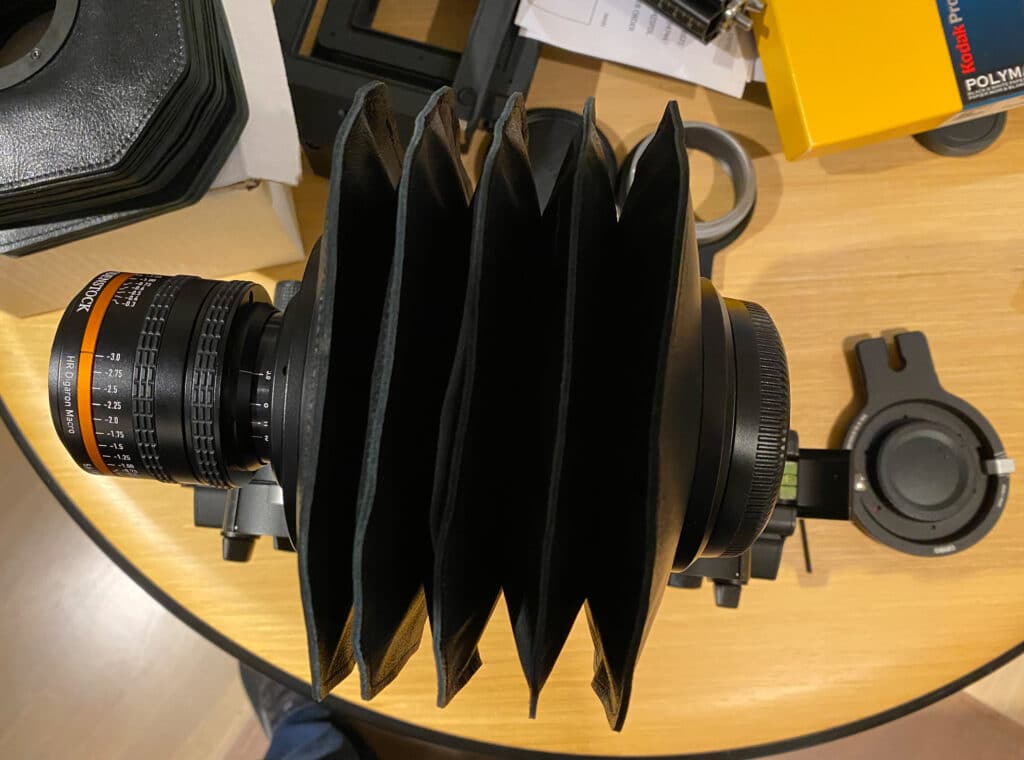

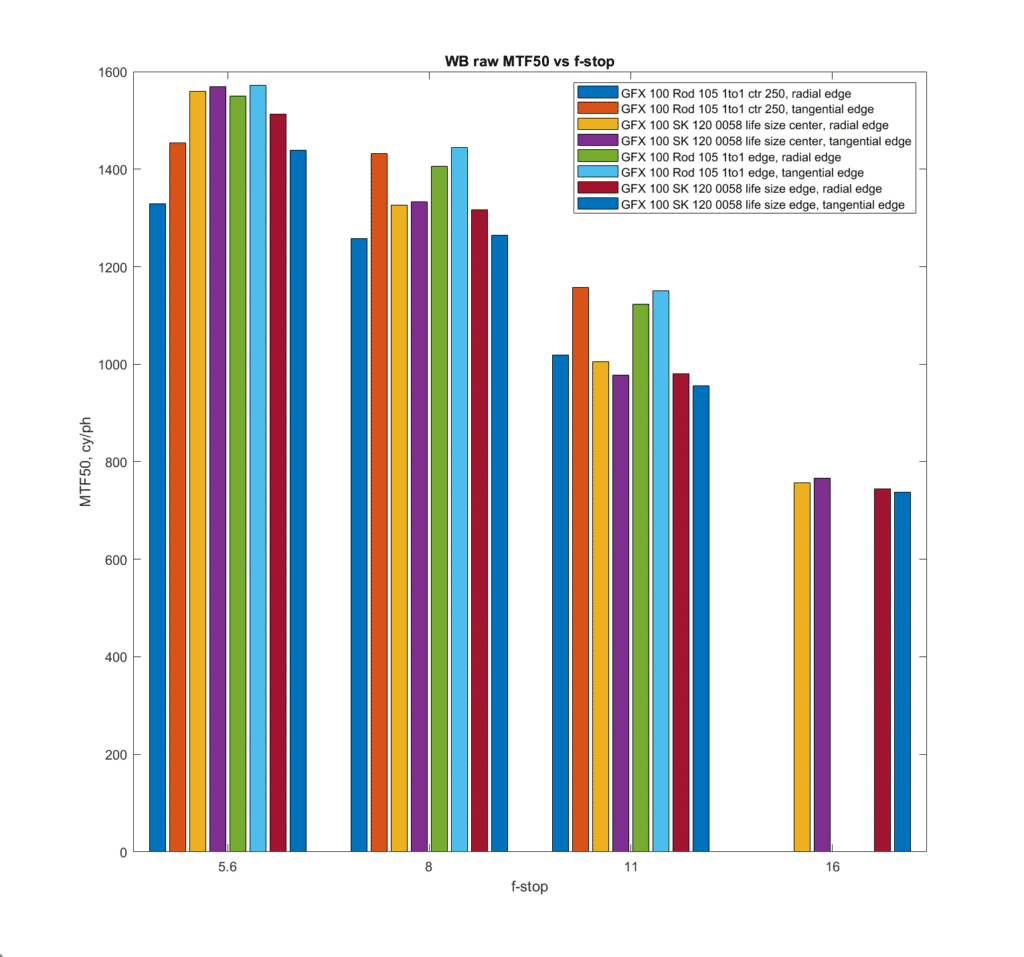
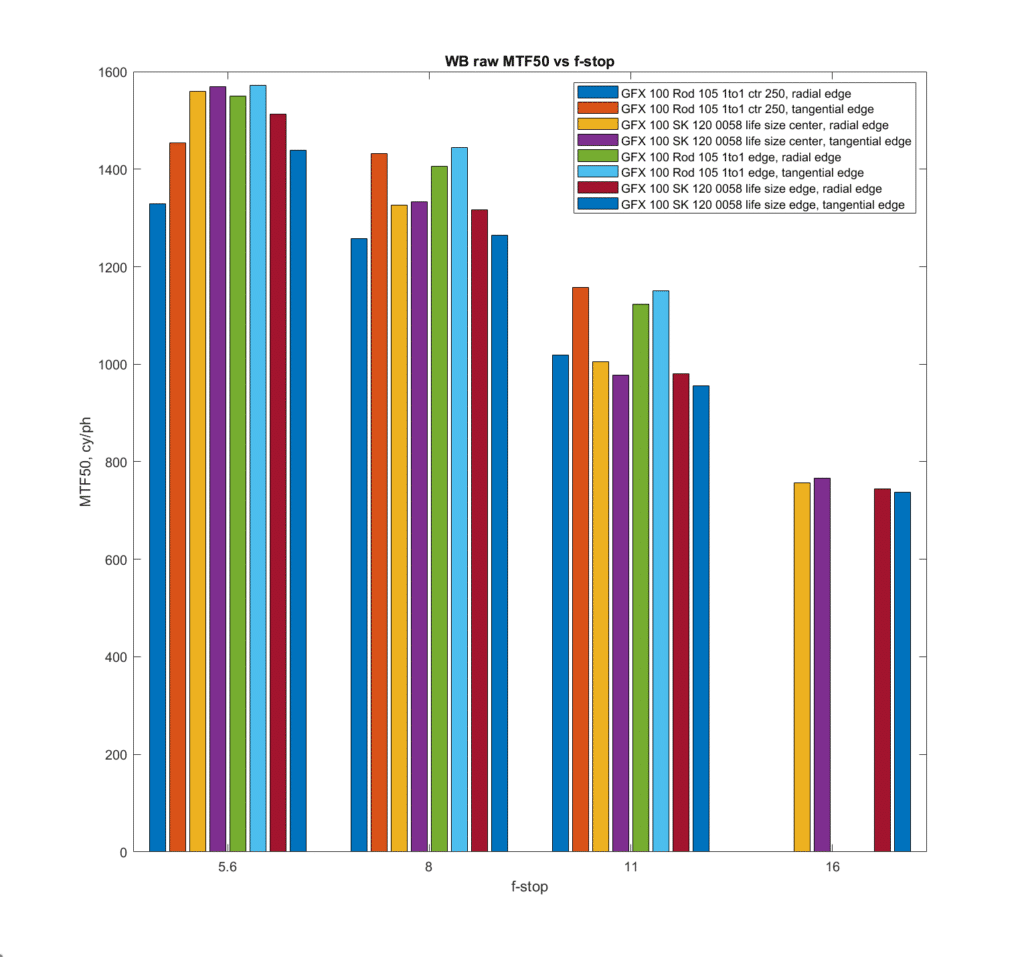
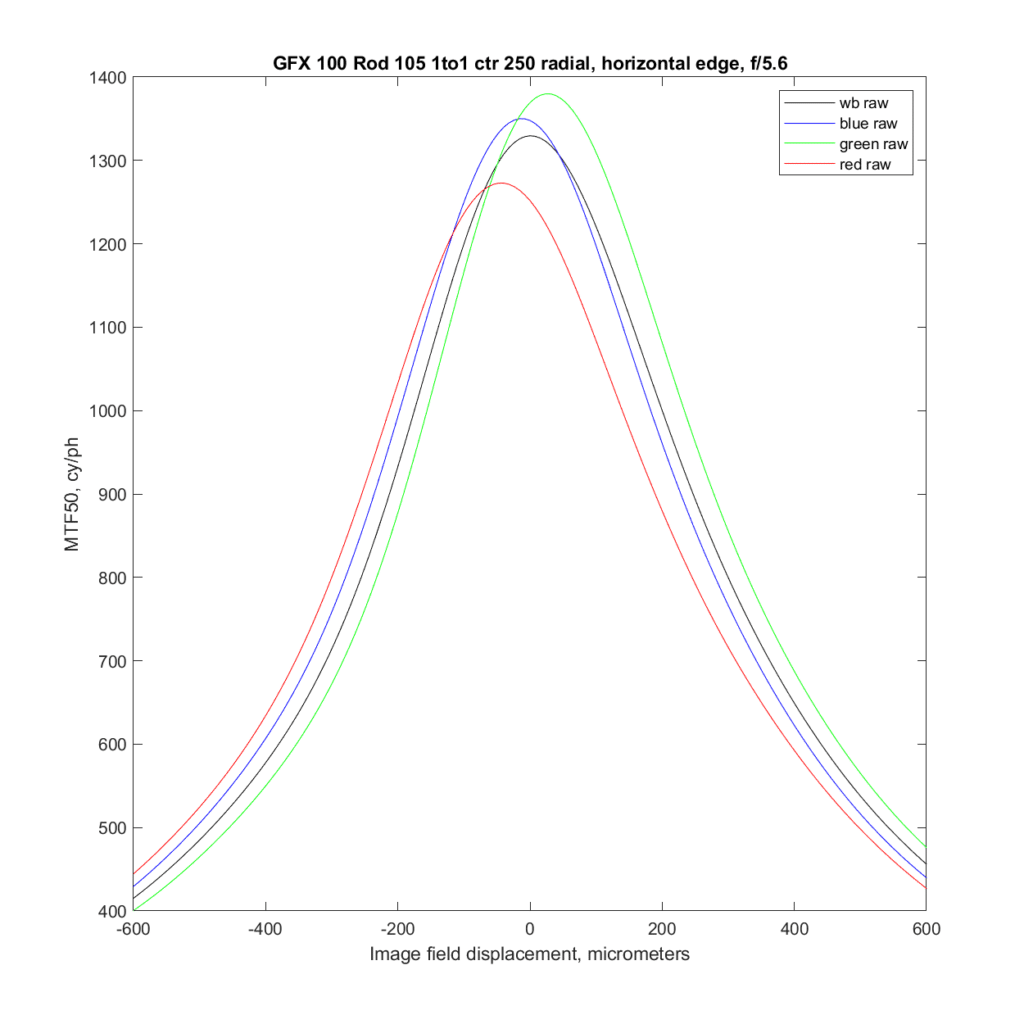
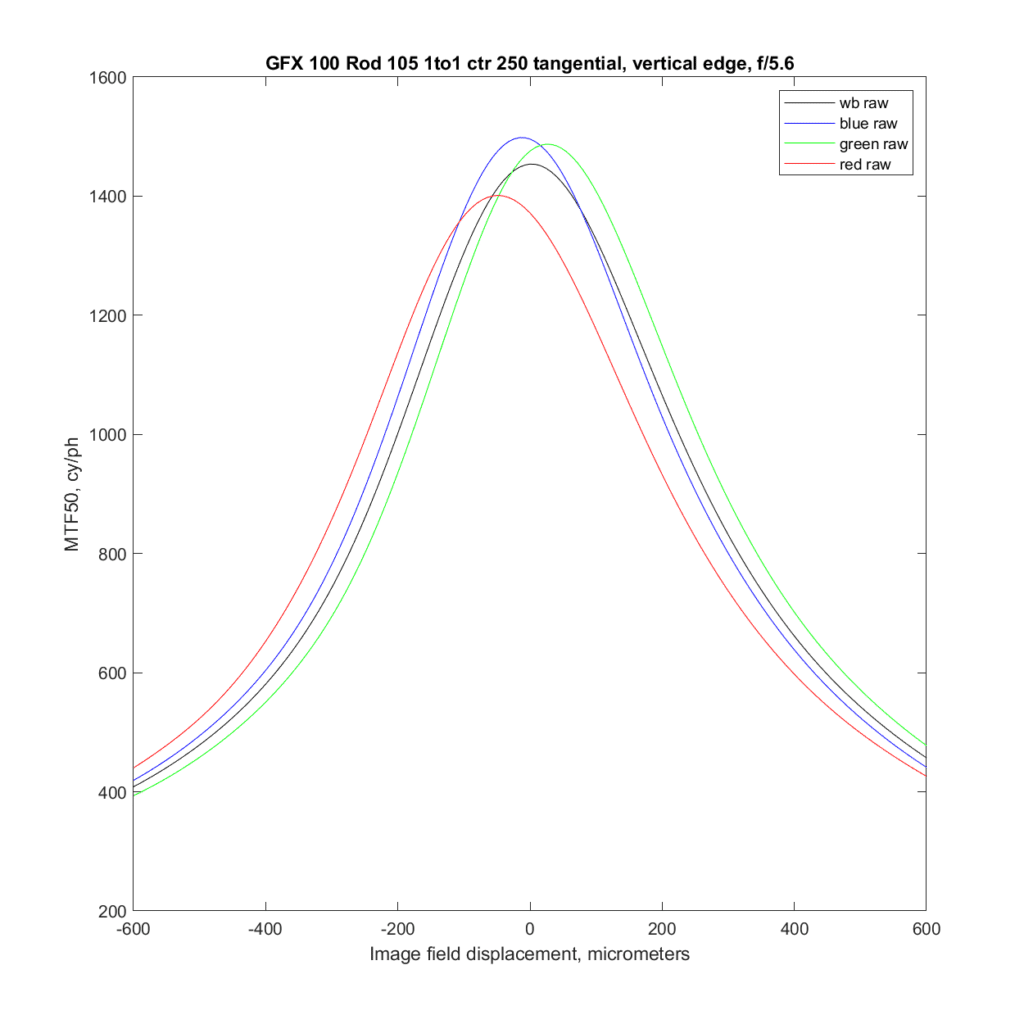
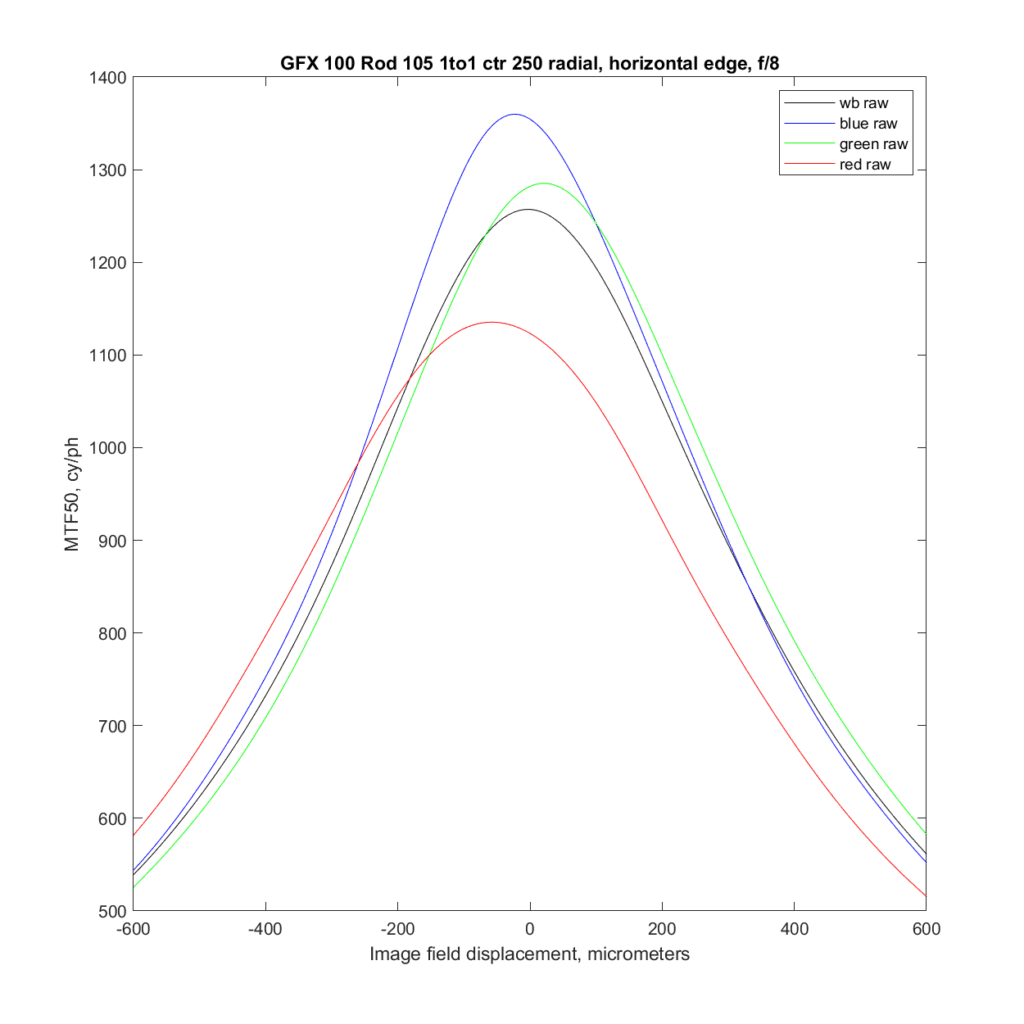
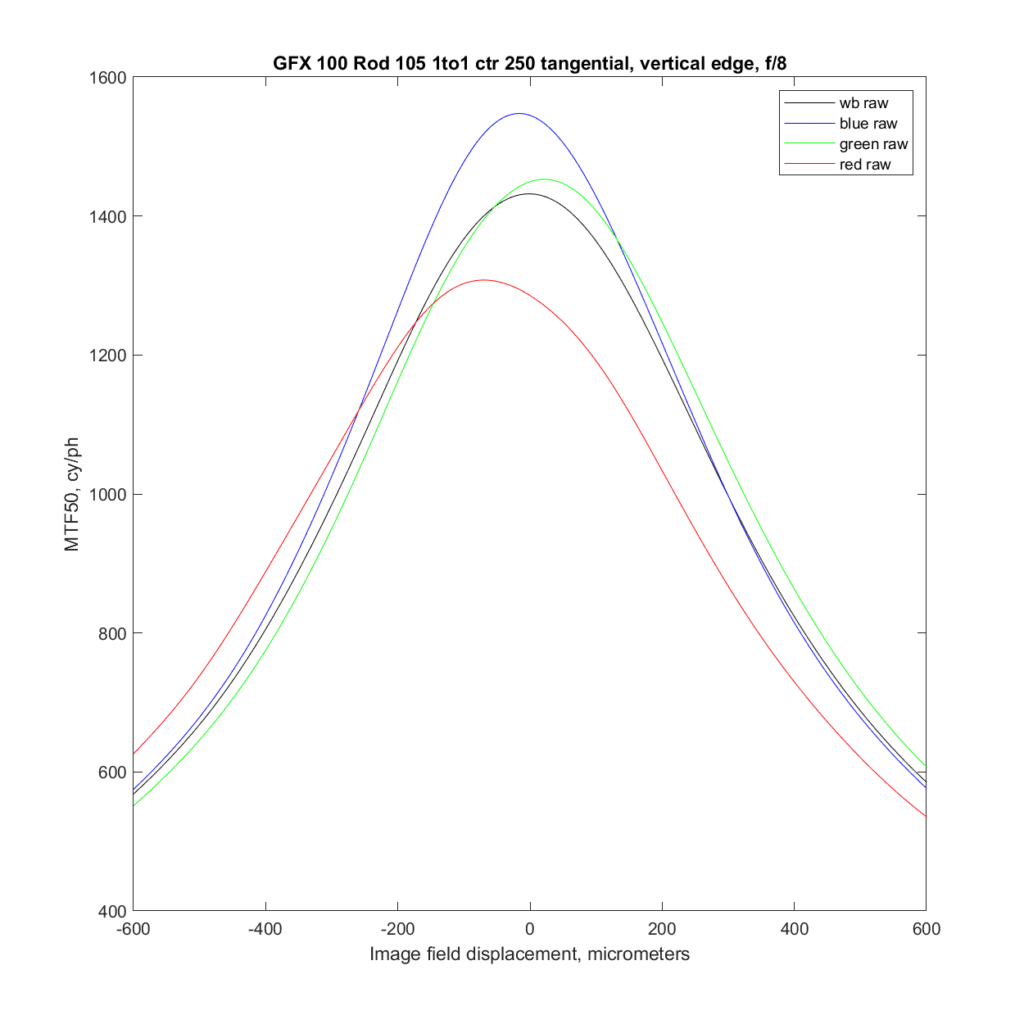
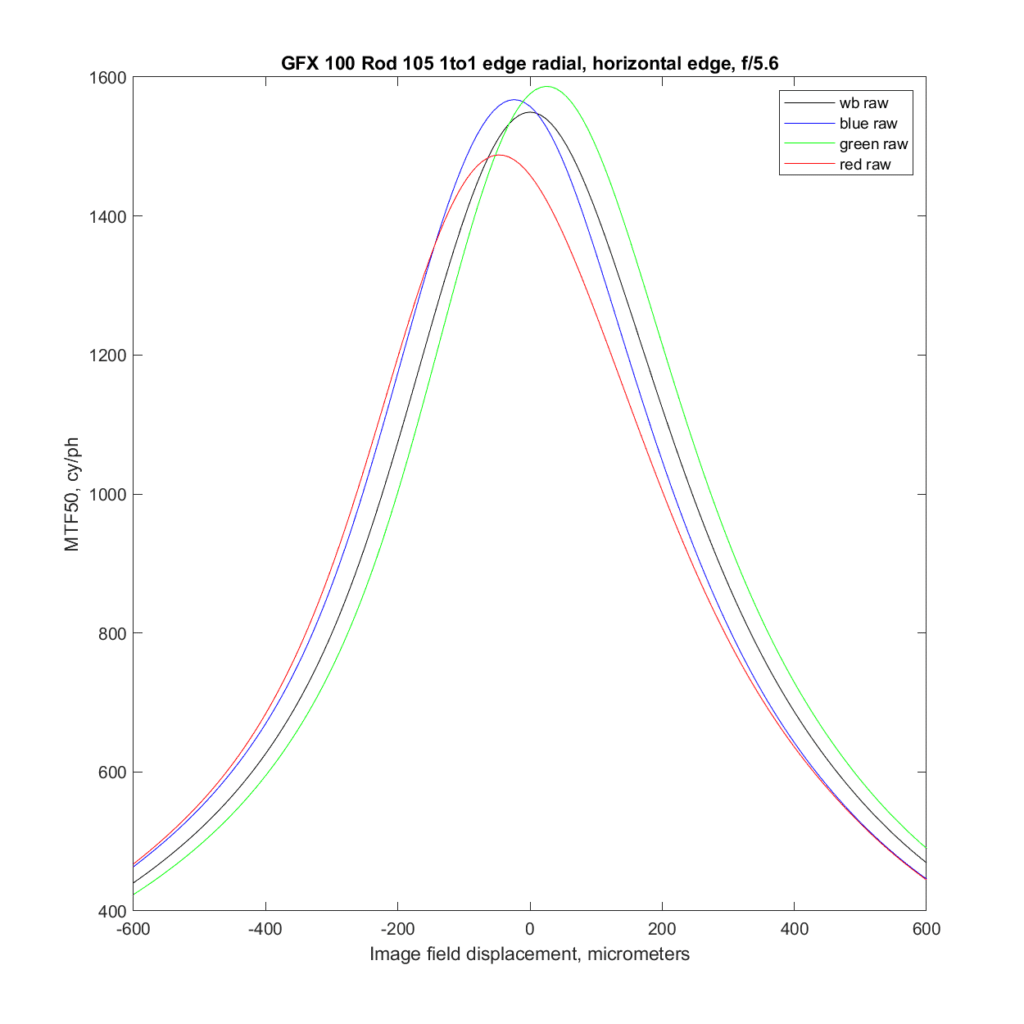
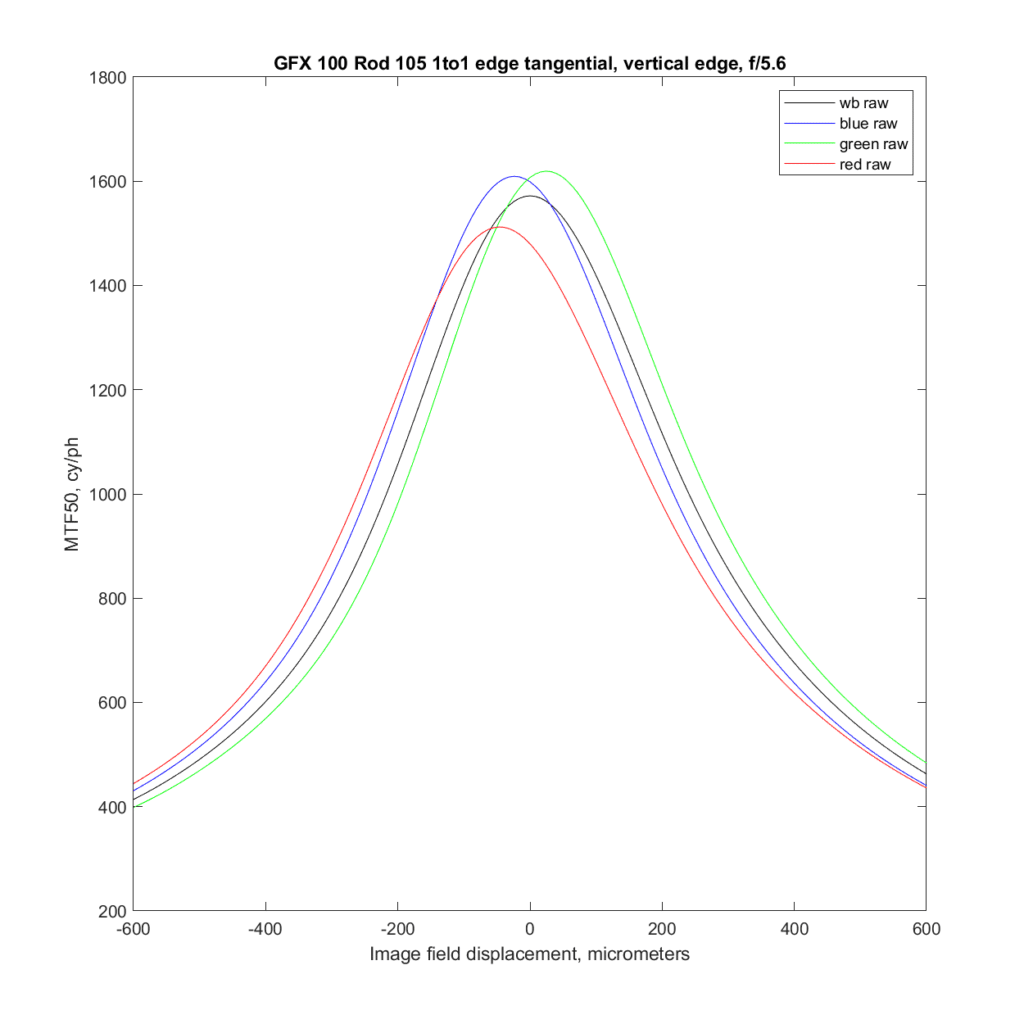
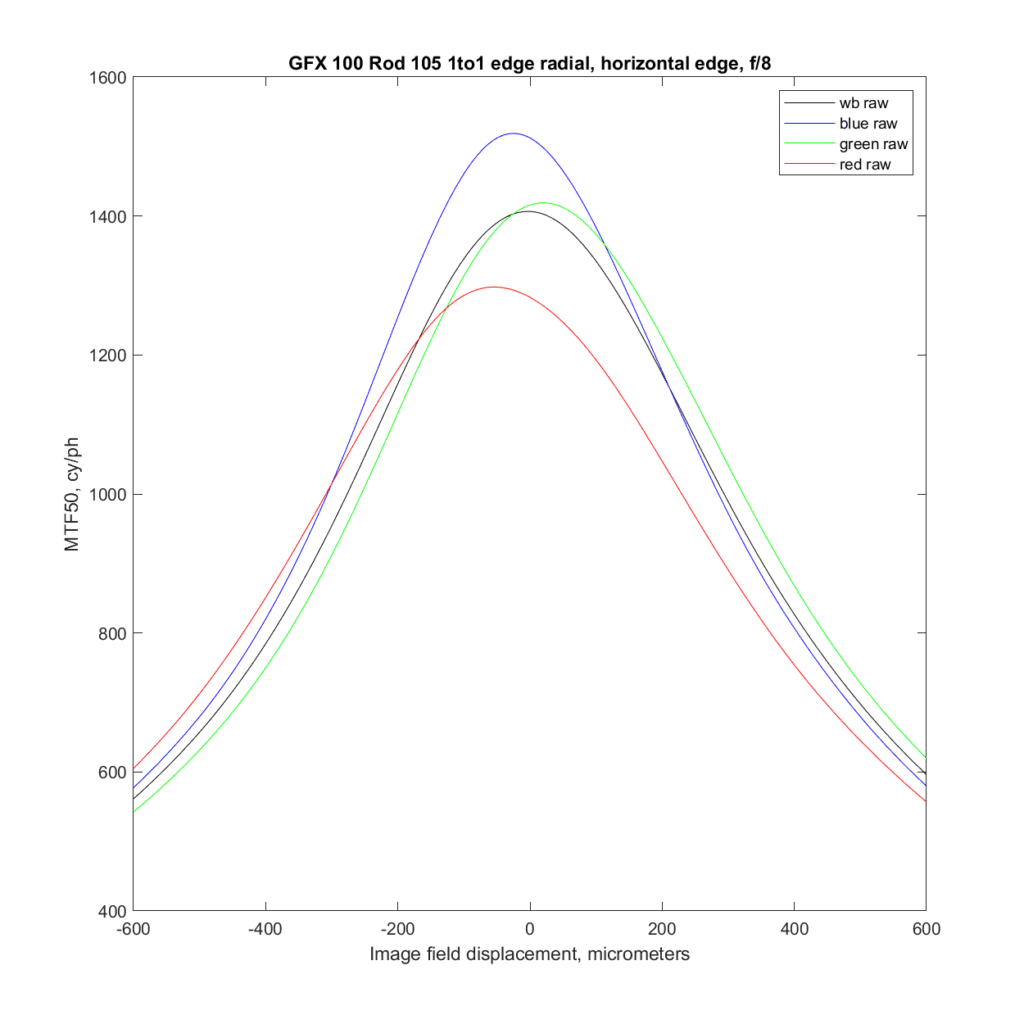
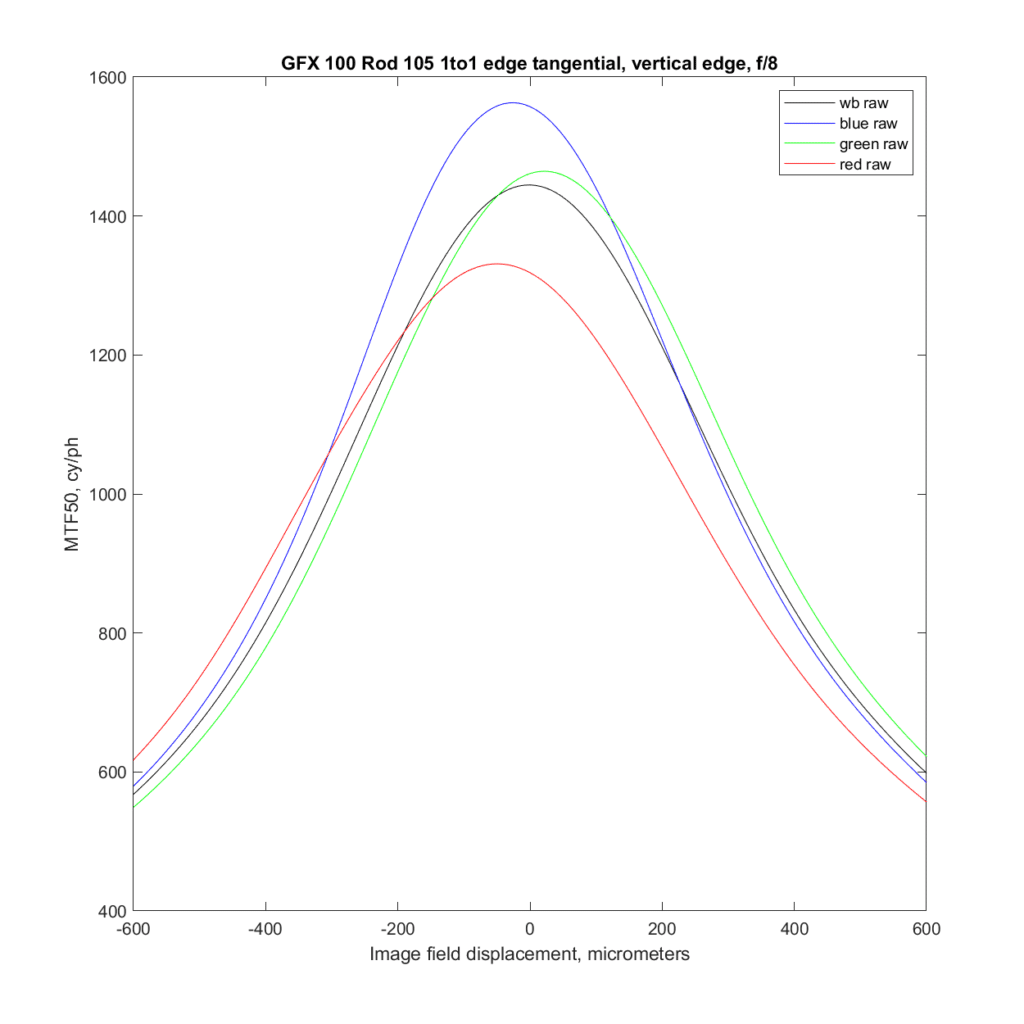
Dominique Ventzke says
Dear Jim,
thanks for sharing the results of your tests.
The less than expected on-axis performance in your test could have been caused by flare. At 1x your lens probably has more than 120 mm illumination circle. If that area outside of your frame isn’t masked it’s a lot of additional light entering your system which might create a central hotspot that will effectively reduce your on-axis contrast.
-Dominique
Vlastimil Čapka says
Hello, I am interested in connecting the Schnieider 120/5.6 Macro Symmar lens to the Fujifilm GFX100s. What reduction can I use to connect?
Best regards
Vlastimil Čapka
JimK says
I don’t understand what you mean by the word “reduction”.
Vlastimil Capka says
Sorry for the wrong wording, I meant Lens Adapters. I have already solved it with Linhof Studio. Thank you
JimK says
Good luck to you.